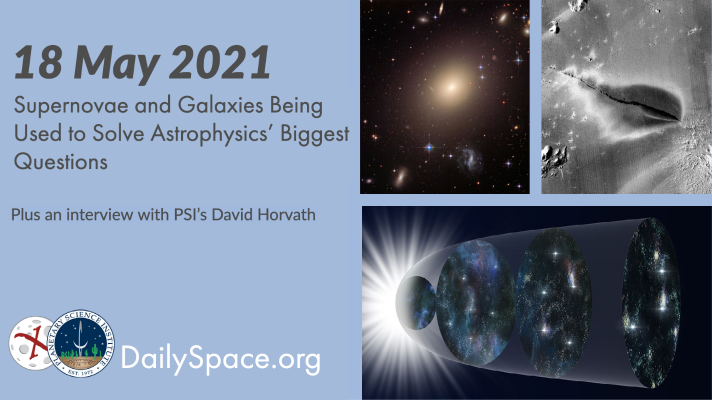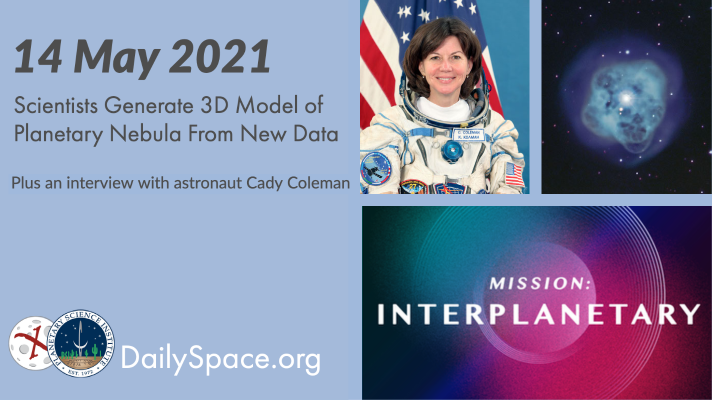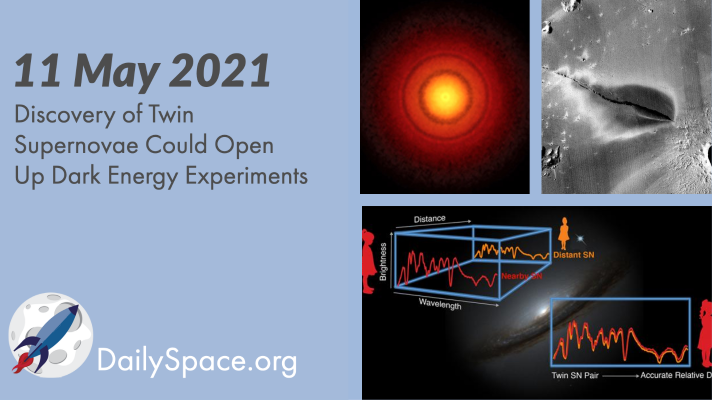
May 19, 2021 | Black Holes (Stellar), Daily Space, Dark Matter, Galaxies, Gemini North, Guest Interview, Mars, Neptune, Physics, Stars, Supermassive Black Holes, Uranus
Two new studies are attempting to solve a couple of big puzzles in astrophysics: Is the Hubble constant actually constant? And why do galaxies have flat rotation curves? Plus, a young star’s circumstellar disk, the search for stellar-mass black holes, magnesium in the deep waters of Neptune and Uranus, and an interview with PSI scientist David Horvath regarding possibly active volcanism on Mars.

May 17, 2021 | Climate Change, Daily Space, Earth, Guest Interview, Planetary Nebulae, Spacecraft, The Sun
Using spectrographic data from several different telescopes, a team put together a three-dimensional model of planetary nebula NGC 1514, which allowed them to further study the shape and internal motion of the object. Plus, Antarctic sea ice, a history of current flow, magnetic waves, and an interview with astronaut Cady Coleman.

May 14, 2021 | Black Holes (Stellar), Brown Dwarf, Daily Space, Earth, Gemini North, Jupiter, Mars 2020, Perseverance, Sky Watching, Stars
A tiny black hole, only three solar masses, has been found inside the Milky Way in the constellation Monoceros. One of the smallest black holes ever found, it is also the closest one to Earth. Plus, Perseverance, Gaia, a brown dwarf, new images of Jupiter, seismic monitoring from space, and this week’s What’s Up.

May 13, 2021 | Daily Space, Random Space Fact, Rockets, Space China, Space History, Spacecraft, SpaceX, Starlink
This week we present more Starlink launches, another Chinese launch, the test launch and landing of SN15, and the re-entry of the Long March 5B core stage that failed its deorbit burn last week. Plus, this week in rocket history, we look back at the launch of Alan Shepard and Freedom 7 on May 5th, 1961.

May 12, 2021 | Asteroids, Daily Space, Exoplanets, Galaxies, Mars, OSIRIS-REx, Planets, Star Forming Region, Supernovae, Voyager I & II
Researchers found that among about 50 supernovae, many had nearly identical spectra, paving the way for making more accurate distance calculations. These calculations, in turn, open up the possibility of using supernovae to better search for dark energy. Plus, OSIRIS-REx, Voyager I, planetary formation, and volcanoes on Mars.

May 6, 2021 | Crewed Space, Daily Space, Random Space Fact, Rockets, Soyuz, Space China, Spacecraft, SpaceX
This week’s Rocket Roundup episode features a remarkable triple header of launches in just over 100 minutes, plus one other launch and the conclusion of the first operational Commercial Crew mission including the first night splashdown of a crewed spacecraft in 53 years.








 We record most shows live, on Twitch. Follow us today to get alerts when we go live.
We record most shows live, on Twitch. Follow us today to get alerts when we go live.